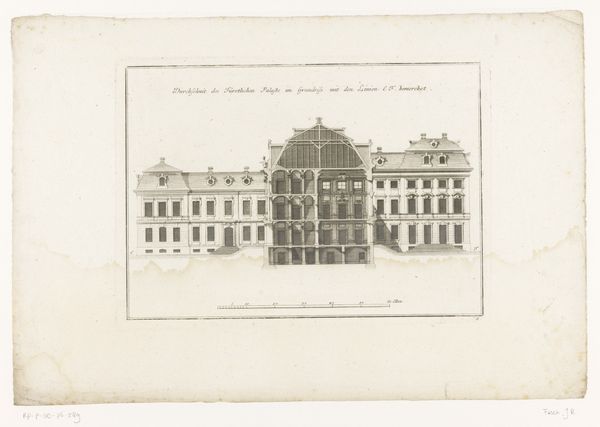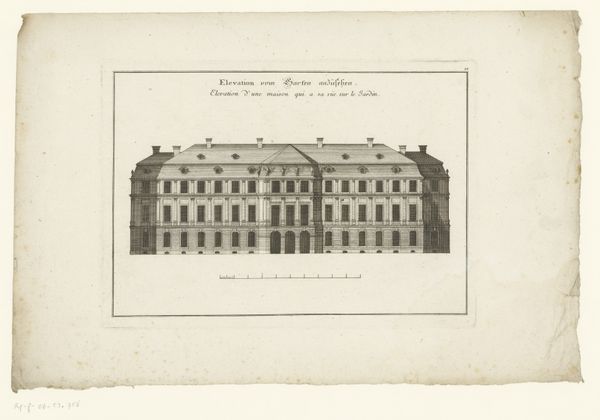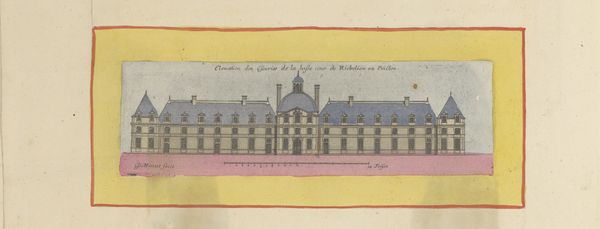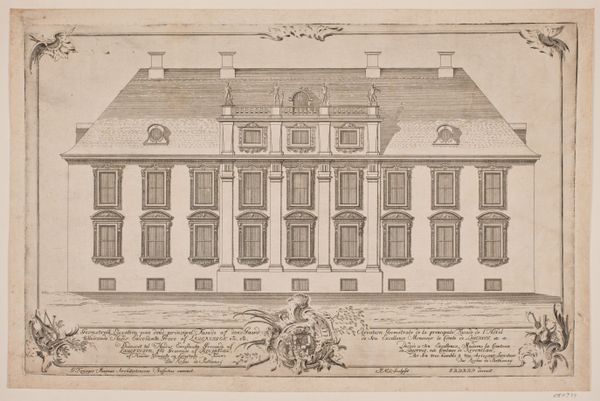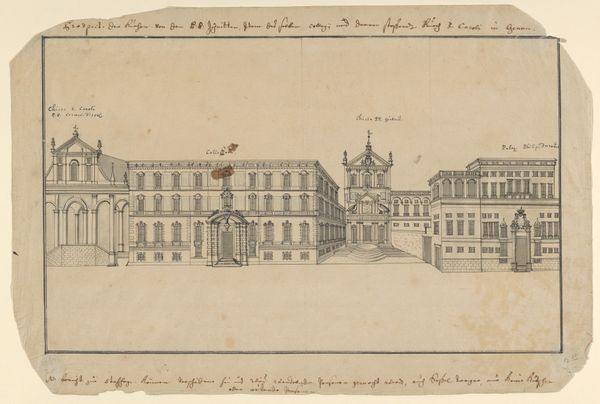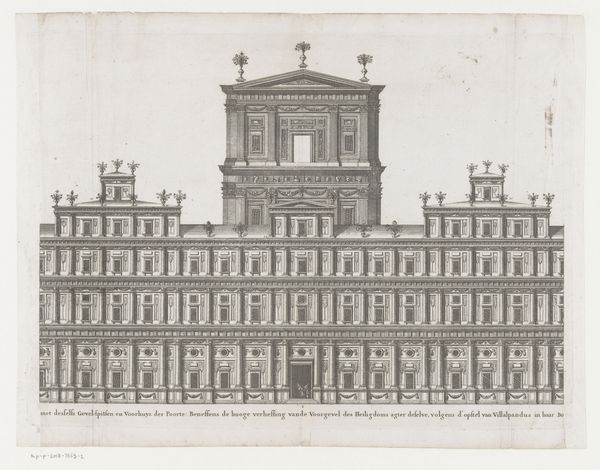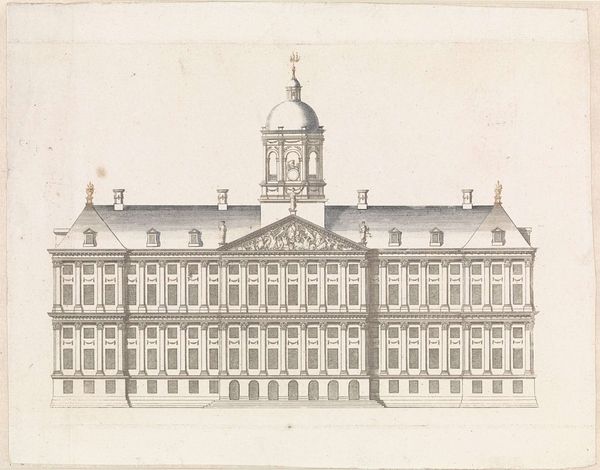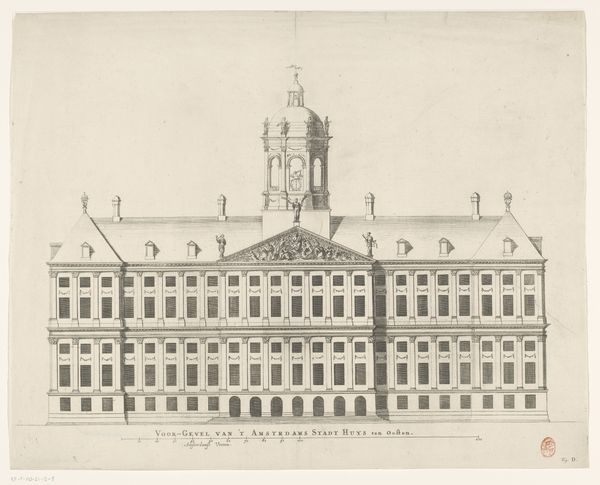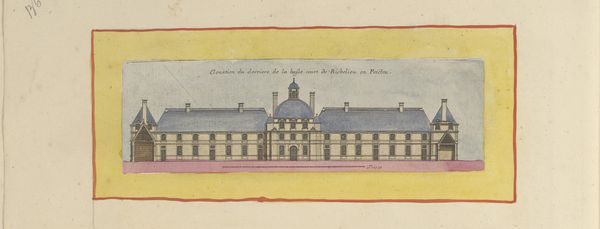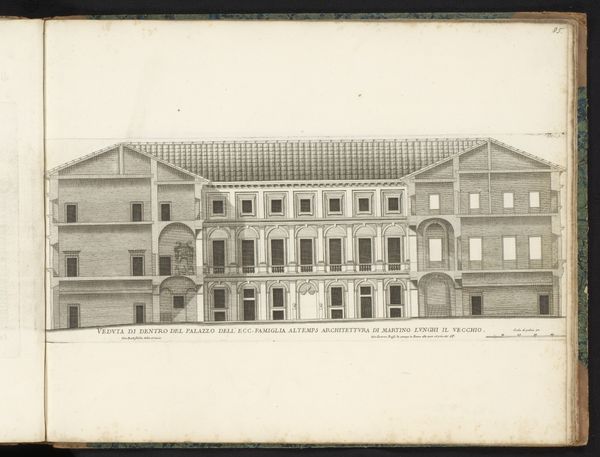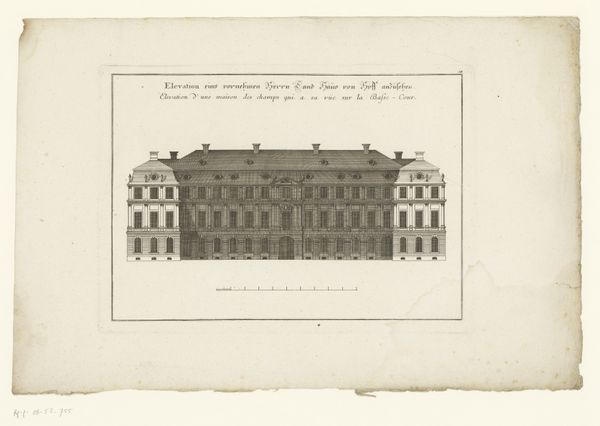
drawing, print, paper, ink, architecture
#
drawing
#
dutch-golden-age
# print
#
paper
#
ink
#
cityscape
#
architecture
Dimensions: height 158 mm, width 230 mm
Copyright: Rijks Museum: Open Domain
Editor: This is an ink drawing from the Dutch Golden Age, dating back to sometime between 1695 and 1699. It’s called “Achteraanzicht van het Stadhuis van Amsterdam,” which translates to “Rear View of the Amsterdam City Hall.” What strikes me is how meticulously rendered it is, but it almost feels...cold, somehow. What do you see in this piece? Curator: This is quite evocative, isn’t it? It makes me think about the symbolic power that buildings hold. Consider the placement of figures atop the roof - almost like watchful guardians or representations of civic virtues overseeing the city. Notice the sculpture right in the center -- does it remind you of Atlas carrying the world on his shoulders? Editor: It does, actually! So, you’re saying it’s not just a building; it's loaded with symbolism? Curator: Precisely. The choice of depicting the rear view is significant. While the front symbolizes power and authority, the back may be hinting at what is unseen, perhaps the more mundane, everyday workings of governance. It is a powerful statement about civic responsibility, the weight of the world – or at least, Amsterdam – resting on the shoulders of its leaders. And the calm symmetry… it’s almost too perfect. Editor: So, the artist might be subtly commenting on the burdens of leadership, even questioning the idealized image of governance through the specific depiction of the rear of the building, which implies an internal complexity not immediately apparent? Curator: Exactly. Think about how architecture reflects and reinforces societal values. It is never a neutral act. By choosing to depict the back and emphasizing visual cues of burden, the artist engages us in a thoughtful interpretation of what power truly signifies. It suggests a collective responsibility, hidden from view. Editor: That’s fascinating. I wouldn't have picked up on those subtle hints without your perspective. Curator: Indeed. It goes to show you that every image carries its own silent narrative, a legacy of cultural memory passed on through visual cues.
Comments
No comments
Be the first to comment and join the conversation on the ultimate creative platform.

